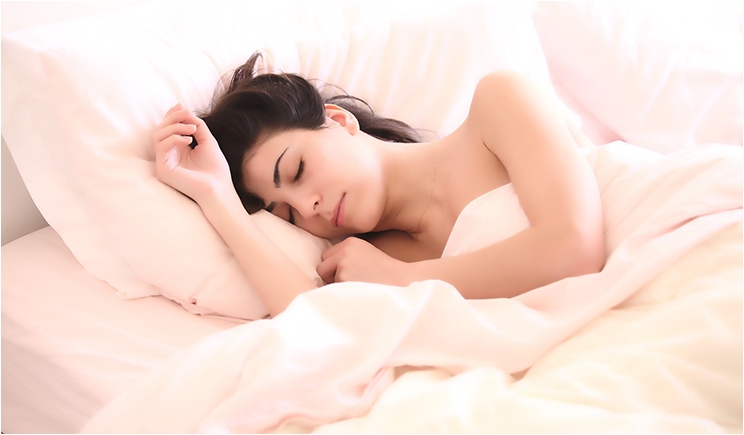
The American Academy of Dental Sleep Medicine (AADSM) recently hosted its 26th Annual Meeting in Boston, bringing together more than 1,200 dentists and sleep medicine professionals from across the globe. Several 2017 AADSM Research Award Winners were honored at the event, and noteworthy abstracts were presented to highlight recent research in oral appliance therapy, providing direction for future studies in the field.
Predicting Patient Success
The meeting’s keynote speaker, Kate Sutherland, PhD, of the University of Sydney, set the stage for the biggest research trend, with her address titled, “Phenotypic Characterization of the Oral Appliance Treatment Responder.” The major focus of her research is obstructive sleep apnea (OSA) and characterization of its heterogeneity to improve recognition and enhance treatment outcomes.
Sutherland has undertaken extensive work on phenotypic characterization of OSA, particularly of anatomic risk factors such as craniofacial structure and obesity, using both sophisticated imaging modalities and clinically applicable surrogates. The overarching goal of her work has been identification of clinical predictors for non-continuous positive airway pressure (CPAP) therapies, especially oral appliance therapy, to enhance treatment options for OSA patients.
The predictability of patient success with oral appliance therapy was the focus of several other studies, including the winner of an AADSM Clinical Research Award, presented to Maysaa Khojah, BDS, MS, for “Predictors of Success for Oral Appliance Therapy in Obstructive Sleep Apnea Patients Based on Initial Craniofacial Characteristics.” The results of this study demonstrate a substantial correlation between patients’ mandibular plane angles and anterior-posterior soft-tissue chin positions with the outcome of oral appliance therapy.
Other abstracts that examined different phenotypes of oral appliance responders observed a range of physical features, including aerodynamic characteristics of the upper airway, weight, body mass index, neck circumference, dental anatomy, and more. All of these research teams caution that the clinical significance of their outcomes should be investigated in future studies, paving the road for more research into what observable characteristics can help dentists predict if OSA patients will achieve treatment success with oral appliance therapy.
Screening and Follow-Up Strides
Another research trend that came out of this meeting was the evaluation of various patient questionnaires at different stages of dental sleep medicine, including screening patients for sleep-disordered breathing, determining the best timing for follow-up polysomnography, and assessing quality of life after oral appliance therapy successfully reduces patients’ apnea hypopnea index.
AADSM’s most prestigious award, the Clinical Research Excellence Award, went to Kristin Dillow, RDH, MS, for her abstract titled, “Assessment of the STOP-Bang Screening Questionnaires in Detecting Sleep-Disordered Breathing Among Dental Patients in a Community Practice Setting.” Dillow’s study compared the original 2008 and the updated 2016 scoring criteria for the STOP-Bang questionnaire to determine which is more suitable to screen dental patients for sleep-disordered breathing. Ultimately, the 2016 STOP-Bang criteria resulted in significantly higher specificity, demonstrating that the updated scoring criteria for the questionnaire serves as a better tool for screening patients for sleep apnea.
Extended Use Studies
The third research trend is a result of the longevity of dental sleep medicine. After nearly 30 years of growth in the field, studies can now observe the long-term effects of oral appliance therapy. In fact, a pair of AADSM Research Award Winners evaluated dental movement resulting from the extended use of an oral appliance.
The Student Excellence Award recipient, Mona Hamoda, BDS, MSc, MHSc, won for her research, “Long-Term Side Effects of Sleep Apnea Treatment With Oral Appliances.” It is the longest patient follow-up study to date, with an average treatment time of 12.6 years and a range of 8 to 21 years. Notably, her research concludes that there are no clinically significant skeletal changes related to oral appliance use.
Through her award-winning work titled, “Dental Side-Effects of Long-Term Obstructive Sleep Apnea Therapy: A 10-Year Follow-up Study,” Julia Uniken Venema, BsC, DMD, also demonstrated that oral appliances can cause significant and progressive dental changes, particularly dental occlusion.
Both of these prolonged studies confirm the need for careful and extended followup by a qualified dentist to evaluate the dental movement associated with long-term oral appliance therapy. To help dentists better evaluate and minimize dental changes, more long-term oral appliance therapy follow-up studies are needed in the field.
This research serves to increase the understanding of oral appliance therapy as an effective treatment option for sleep apnea patients. The AADSM Annual Meeting will continue to offer dentists the best opportunity to stay ahead of the curve on what is trending in dental sleep medicine research. To learn more, visit aadsm.org.
Dr. Smith is the president of the AADSM and the clinical director of Dental Sleep Medicine of Indiana. He also serves as the dental consultant to the major Indianapolis hospital sleep disorder centers and is on the faculty at Indiana University School of Medicine’s Fellowship program in sleep medicine. As a distinguished speaker and American Board of Dental Sleep Medicine (ABDSM) Diplomate, he also is a Fellow of the American College of Dentists and is an active member of the AADSM, ADA, Indiana Dental Association, Indianapolis District Dental Society, and AGD. He is a graduate of the Indiana University School of Dentistry. Also, Dr. Smith served as president of the AADSM from 2002 to 2004, received the AADSM Distinguished Service Award in 2006, and acted as president of the ABDSM from 2008 to 2010. He can be reached at info@dentalsleepmedicineindiana.com.
Related Articles
Common Red Flags for Continuing Education in Dental Sleep Medicine
Dentist-Physician Collaboration Fundamental to Dental Sleep Medicine
Advance Your Dental Sleep Medicine Career with Best-in-Class Education











